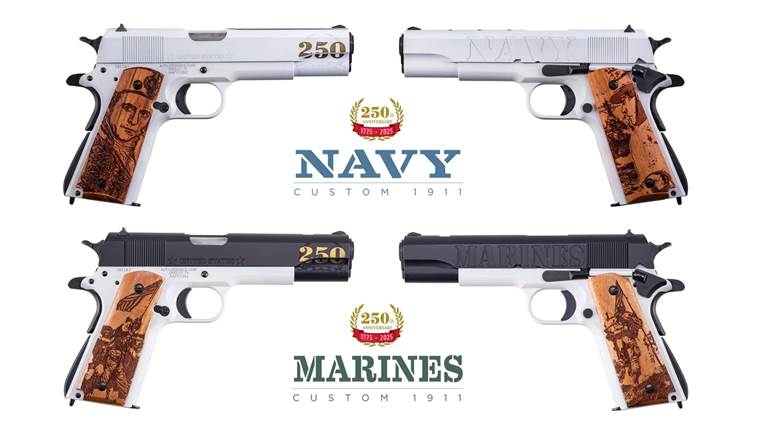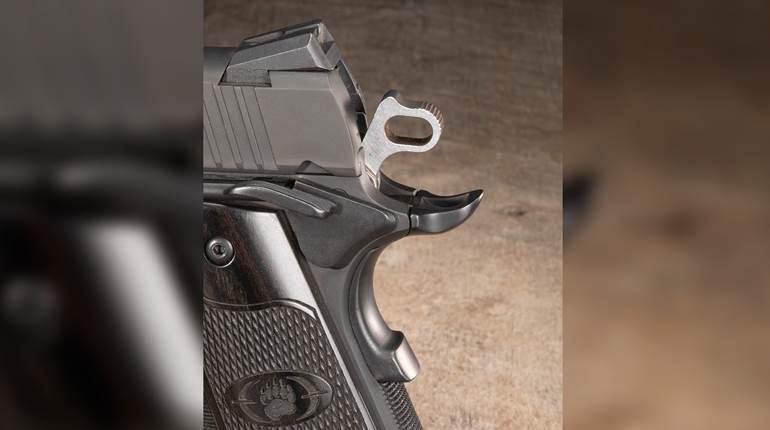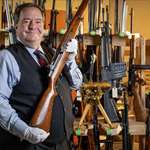
To a handgun specialist, the 1911 is a familiar pattern. For Americans, the handgun of the 20th century is Colt’s Model of 1911, caliber .45. The majority of competitive handgun manufacturers offer some variation of this classic design, so gun reviewers deal with the terminology frequently. Not surprisingly, they have become a little sloppy about differentiating between the 1911 pistol and the 1911A1 variant thereof. So let’s review this classic handgun information once again for those who came in late.
Officially adopted on March 29, 1911, the Colt-designed and produced .45 Government Model .45 pistol saw active service with the U.S. Cavalry almost immediately. When the Great War began in 1914, some of the guns were in the hands of British officers, and when we entered the war in 1917, it was the established and proven choice of the U.S. military. Made by several makers during the war years, the pistol was proven in the trench warfare of the 1917 and 1918 period. Relatively minor deficiencies in the design were noted by Army Ordnance and those who used the gun for its intended purpose. In the early 1920s, the Army and Colt Firearms set about developing a series of modifications that eventually were used. In effect, these changes to an already proven handgun design differentiated the original 1911 pistol from the 1911A1.
There were five major visible changes to the .45, as well as many other and less obvious ones. They are as follows:
1. Sights, both front and rear, were increased in size to allow for a wider and more immediately visible sighting notch with a square bottom. Early sights were hard to find and align under stress.
2. The tang, or rearmost extension, of the grip safety was extended rearward over the web of the shooter’s hand. The original design was prone to bite the shooter’s hand when skin rolled up over the short tang and was pinched by the pivoting hammer.
3. Semi-circular relief cuts were installed at the rear edge of the trigger guard on both sides of the frame. This effectively shortened the trigger reach and made the pistol easier to handle for soldiers with smaller hands.
4. The trigger was shortened in its front-to-back dimension and the trigger face was checkered. This was another effort to make the pistol usable in a variety of hands. It created the terminology “long” trigger and “short” trigger.
5. The mainspring housing in the lower rear corner was arched and checkered. This tended to correct the tendency to shoot low when pointed and fired. In fact, it did just the opposite when the gun was raised to eye level and aimed.
Pistols, both commercial and military were designated Models of 1911A1. The modifications did not happen overnight and in fact took several years to accomplish. Also, there a number of other specifications that changed. Interestingly enough, the modern Colt pistol that evolved from the early days of both 1911 and 1911A1 designs has many of the early features, but also some completely new ones. Most shooters want the 1911 (flat) mainspring housing and (long) trigger, but also prefer the 1911A1 trigger relief cuts. Their sights are huge and sometimes include tritium inserts for low-light work. The extended tang grip safety was morphed into today’s widened “beavertail” types.

















![Winchester Comm[94]](/media/1mleusmd/winchester-comm-94.jpg?anchor=center&mode=crop&width=770&height=430&rnd=134090756537800000&quality=60)
![Winchester Comm[94]](/media/1mleusmd/winchester-comm-94.jpg?anchor=center&mode=crop&width=150&height=150&rnd=134090756537800000&quality=60)


















